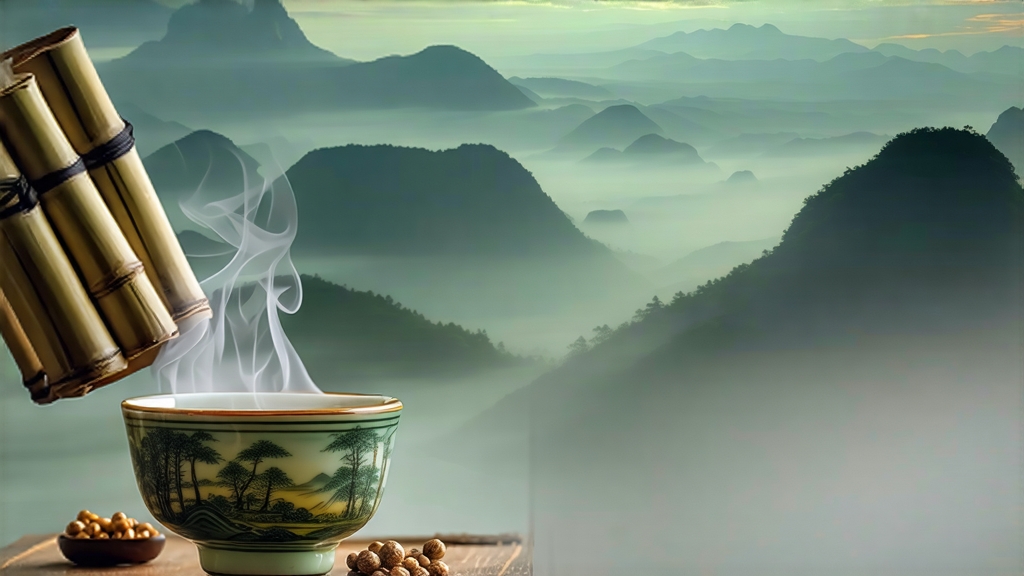
Tucked high on the mist-veiled slopes of Mt. Meng in Sichuan Province, Meng Ding Huang Ya has been whispered about in Chinese tea texts for more than twelve centuries. Tang-dynasty poets called it “the dew of immortals,” Song emperors levied it as tribute, and Qing scholars smuggled cuttings past monastery gates to keep the cultivar alive during wartime. Today it remains the least-travelled of China’s six major tea families, a quiet aristocrat among the louder greens and blacks that dominate export menus. To understand Meng Ding Huang Ya is to step into a micro-climate where altitude, monsoon, and Confucian patience converge in a single, down-covered bud.
The cultivar itself is a local variant of Camellia sinensis var. sinensis, distinguished by unusually high concentrations of theanine and a rare dihydroactinidiolide that emerges only after the “sealed yellowing” step. Gardens sit between 800 m and 1 400 m, where nightly mountain fog slows photosynthesis, forcing the plant to stockpile amino acids. Picking begins in mid-March when two-thirds of the buds are still closed; standard grade plucks one bud and one unfurling leaf, while the imperial grade insists on the unopened “sparrow’s tongue” alone. A skilled picker can finish barely one kilogram of fresh material in a dawn shift, enough for 200 g of finished tea once water evaporates and stems are sorted away.
Processing Meng Ding Huang Ya is a choreography of heat, moisture, and oxygen deprivation that must be completed within 36 hours. First comes “kill-green” at 160 °C on a bamboo-roasted wok, a 4-minute toss that arrests oxidation yet keeps enzymes alive for the crucial next phase. The leaves are then piled 5 cm deep in linen sacks and transferred to a humid “yellowing room” kept at 28 °C and 75 % relative humidity. Here they sweat for 60–72 hours, turning from jade to pale topaz as chlorophyll degrades and polyphenols oxidize just enough to round the edges of astringency. Unlike green tea, which is immediately dried, the yellowing step is repeated twice more with intervening low-temperature desiccations at 80 °C, locking in a mellow sweetness that lingers like warm custard. The final bake is done over charcoal embers covered with bamboo ash, a gentle 50 °C that perfumes the leaf with a faint smokiness reminiscent of toasted rice.
Western drinkers often confuse yellow tea with lightly oxidized oolong because both can exhibit floral notes, yet the chemistry is distinct. Gas-chromatography studies show Meng Ding Huang Ya carries 30 % more trans-2-hexenal than a comparable Dong Ding oolong, giving it a fresh-cut bamboo aroma, while its theanine level hovers around 2.2 %—almost double that of Dragon Well green. The result is a liquor that is weightless on the palate yet saturated with flavor, a paradox that defies the tongue until the third steeping, when the amino acids finally bloom into a brothy umami.
To brew the tea authentically, use a porcelain gaiwan of 120 ml capacity and 4 g of leaf. Pre-heat the vessel with 85 °C water, then pour the first infusion after a 15-second “awakening” rinse that is discarded. Subsequent steeps lengthen by five seconds each: 20 s, 25 s, 35 s, 50 s, 75 s, 2 min. The water should fall from a height of 10 cm to aerate the liquor, but avoid swirling the leaves, which can extract bitter catechins. By the fourth infusion the bud tips stand upright like miniature glass sculptures, a phenomenon locals call “bamboo shoots after rain.”
Tasting follows a four-step ritual borrowed from Song-dynasty tea judges. First, listen: raise the cup to ear level and draw in air; a faint crackling signals residual moisture, indicating proper storage. Second, observe color: the liquor should glow like white wine held to candlelight, never neon green or deep amber. Third, inhale through the nose while keeping lips parted; look for top notes of orchid, honeydew, and steamed edamame, followed by a base note of wet stone. Finally, hold the liquor on the tongue for eight seconds, exhale through the nose, and swallow while counting to three; a cooling sensation at the back of the throat, called “ginger flower